Parallels Desktop 10 Puts Emphasis on Features Over Performance
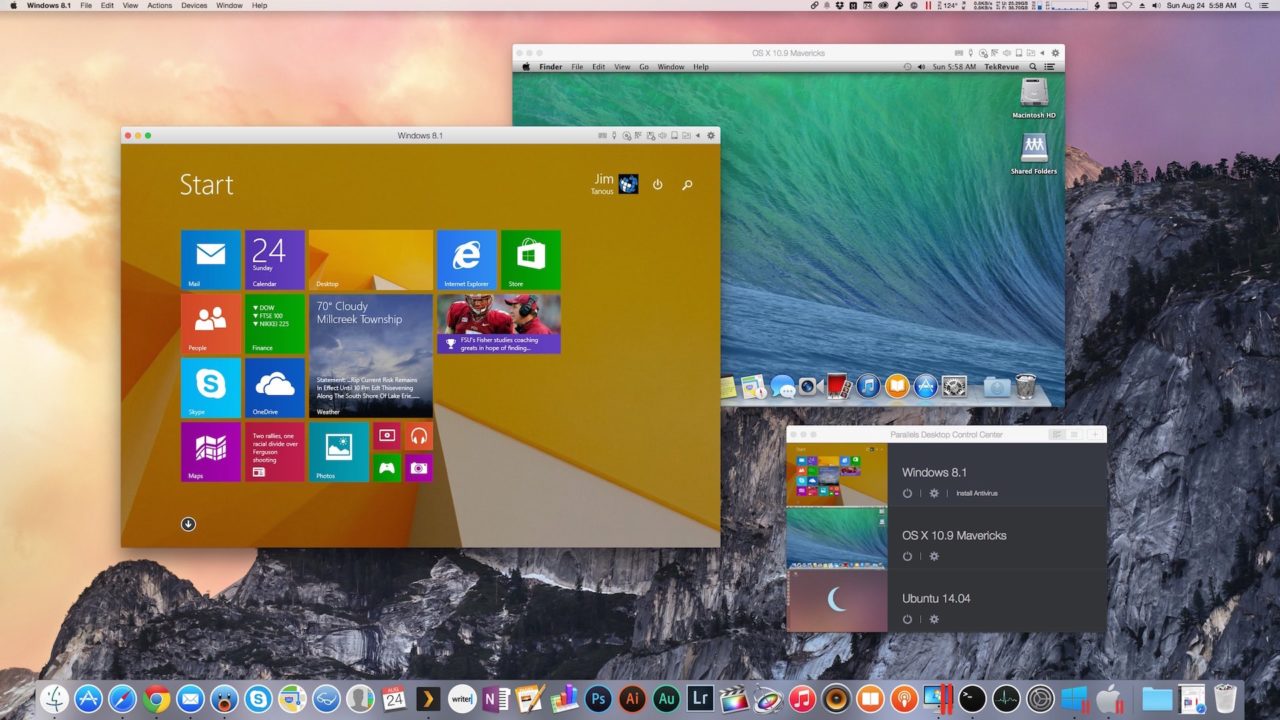
Benchmarks
Aside from some sporadic releases early in the software’s life, Parallels Desktop, and its primary commercial competitor, VMware Fusion, have moved to a yearly release cycle, with each new version bringing improved performance in at least some areas every year. To see if that trend continues with Parallels 10, we ran a series of benchmarks comparing it to its direct predecessor, Parallels 9.
In the past, we’ve run virtualization benchmarks on high-end Macs, only to receive a bevy of complaints that our testing hardware didn’t match the real-world scenarios encountered by most users. To address this concern, we ran our benchmarks this year on much more modest hardware in the hopes that the results will be more relevant to our readers. Our test platform for the following tests is a 2011 15-inch MacBook Pro, with a 2.3GHz Quad-Core i7 CPU, 8GB of memory, and a 1GB Radeon HD 6750M GPU. The only upgrade we’ve made to this system is the replacement of the stock hard drive with a 500GB Samsung 840 EVO SSD. We realize that this may make some of the disk-based test results less relevant for readers using a traditional hard drive, but, really, SSD prices are cheap enough these days that everyone should pick on up for their system drive.
In terms of software, we’re using OS X 10.9.4 Mavericks and the latest builds of Parallels Desktop 9 and Parallels Desktop 10. Although a major feature of Parallels 10 is Yosemite support, we’re only officially reporting Mavericks results as Yosemite is still in beta and may cause irregularities with the benchmarks. We did, however, run all tests using Parallels 10 on Yosemite Developer Preview 6 out of curiosity, and there was no significant difference in the results. We’ll perform these tests again once Yosemite is released and let you know if anything changes, but for now you can expect the same Parallels 10 performance regardless of whether it’s running on Mavericks or Yosemite.
Our guest operating system for these tests is 32-bit Windows 8.1, configured with a pre-allocated 30GB virtual disk, DirectX10 3D video, access to 2 vCPUs, and 4GB of memory. All current performance and security patches were installed, as was Microsoft Office 2013 for the tests that relied on that software. With the exception of time-based and PCMark tests, all tests were performed three times and the results were averaged. Time-based tests (boot, suspend, etc.) were performed five times and manually timed with a stop-watch, while PCMark automatically runs three iterations of each test, so it was manually initiated only once.
Without further ado, the results:
We’ll start off with the popular cross-platform Geekbench 3. This software tests the CPU and memory performance of a device, but not GPU or storage capabilities. Results are reported with an overall score, as well as individual scores for each primary testing area.
We won’t leave you in suspense; the results above preview a running theme that you’ll see throughout the rest of this review. There’s virtually no difference in performance between Parallels Desktop 9 and Parallels Desktop 10.
Let’s take another look at general performance with the PCMark benchmark, which offers a number of tests that balance CPU, GPU, memory, and storage. Some of PCMark’s tests require DirectX11, which isn’t yet supported in Parallels. However, we can still run the productivity-focused tests, which look at things like Web browser support, video chat performance, and Office 2013 applications.
 Again, there’s virtually no performance difference between Parallels 9 and 10. How about Passmark Performance Test?
Again, there’s virtually no performance difference between Parallels 9 and 10. How about Passmark Performance Test?
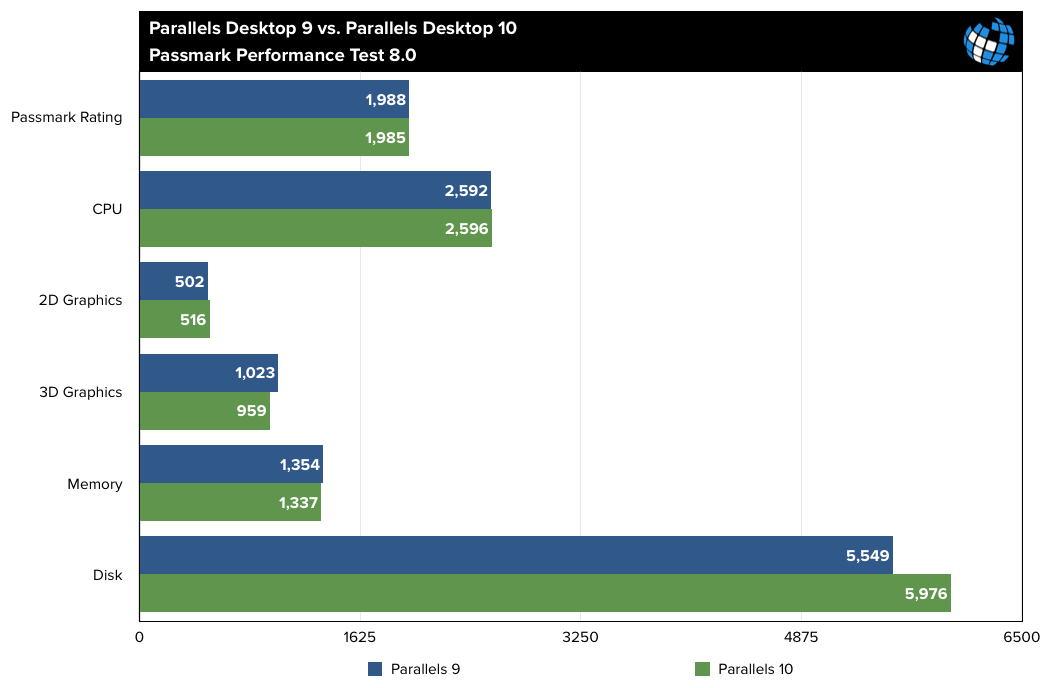 Mostly the same once again, although Parallels 10 does seem to enjoy about a 7.5 percent edge in disk performance. So it’s clear that from a computational and memory perspective, there’s not much difference between the capabilities of Parallels 9 and 10. But Parallels has touted some big graphics improvements in recent years, so let’s take a look at GPU performance, first with 3DMark06:
Mostly the same once again, although Parallels 10 does seem to enjoy about a 7.5 percent edge in disk performance. So it’s clear that from a computational and memory perspective, there’s not much difference between the capabilities of Parallels 9 and 10. But Parallels has touted some big graphics improvements in recent years, so let’s take a look at GPU performance, first with 3DMark06:
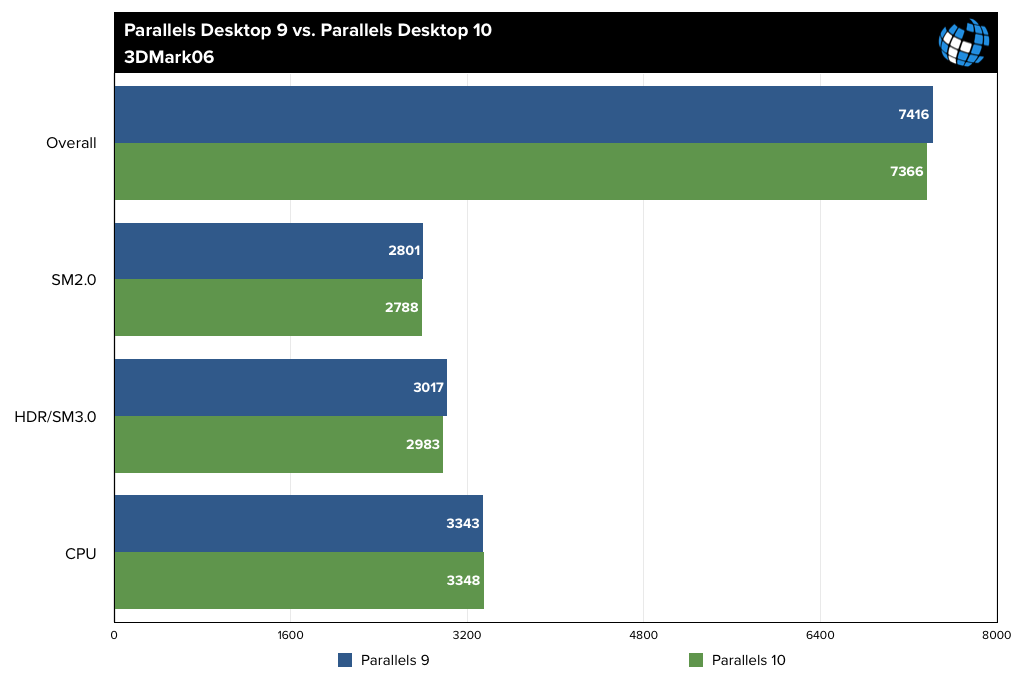 Nope, nothing. Okay then, let’s try a more modern benchmark with the 2013 edition of 3DMark. This version of 3DMark has a wide range of benchmarks suitable for testing everything from low-power mobile devices all the way up to extreme gaming PCs that cost as much as a small car. Due to the relatively limited capabilities of both our host hardware and the Parallels graphics driver, we’re using the entry-level “Ice Storm” test.
Nope, nothing. Okay then, let’s try a more modern benchmark with the 2013 edition of 3DMark. This version of 3DMark has a wide range of benchmarks suitable for testing everything from low-power mobile devices all the way up to extreme gaming PCs that cost as much as a small car. Due to the relatively limited capabilities of both our host hardware and the Parallels graphics driver, we’re using the entry-level “Ice Storm” test.
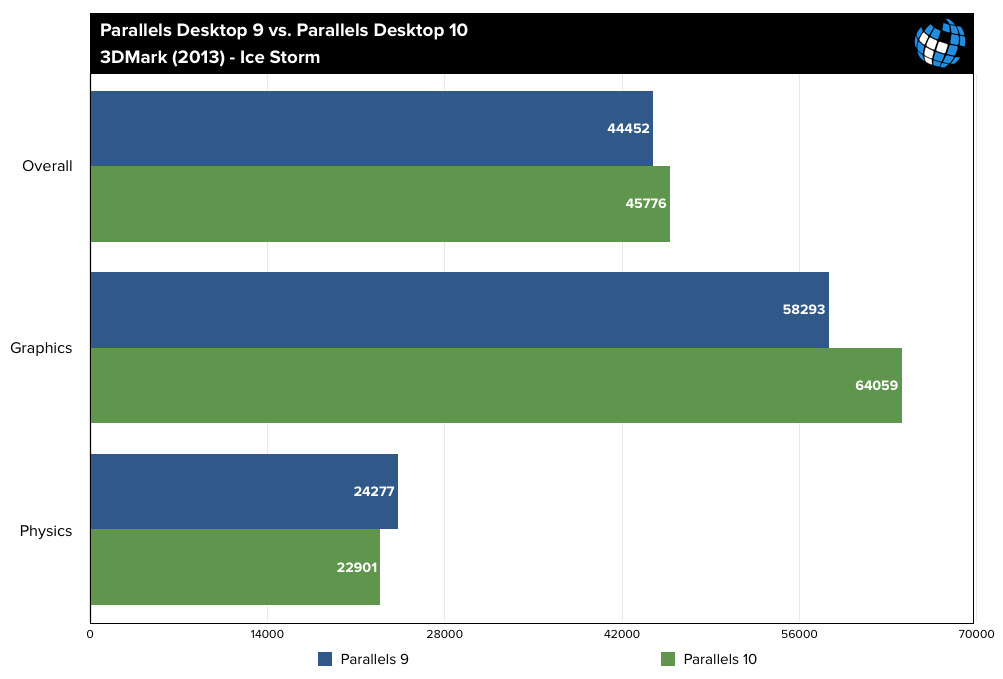 Here, we finally see a difference, but it’s surprisingly not all in Parallels 10’s favor. The latest version of Parallels does indeed score about 10 percent higher in the Graphics test, but actually drops about 5 percent to Parallels 9 in the CPU-bound Physics test. If we run the “Extreme” version of the Ice Storm test, which ratchets the resolution up to 1080p and uses higher quality textures, we see the same basic trend:
Here, we finally see a difference, but it’s surprisingly not all in Parallels 10’s favor. The latest version of Parallels does indeed score about 10 percent higher in the Graphics test, but actually drops about 5 percent to Parallels 9 in the CPU-bound Physics test. If we run the “Extreme” version of the Ice Storm test, which ratchets the resolution up to 1080p and uses higher quality textures, we see the same basic trend:
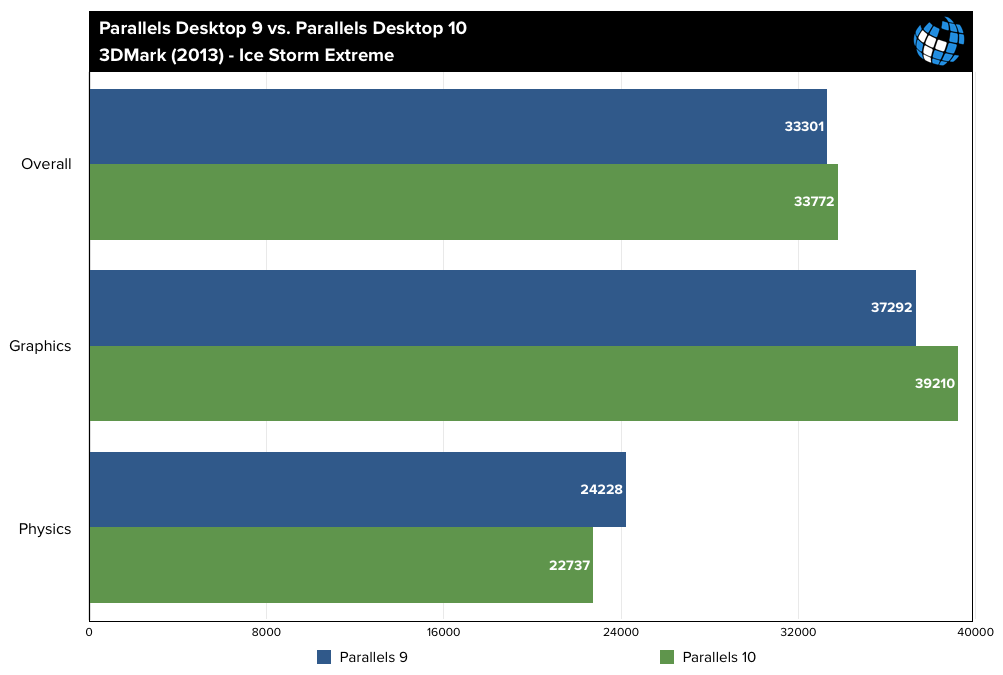 If you were hoping that Parallels 10 would bring another boost in gaming and computational performance, we’re sorry to say that this isn’t your year. But that doesn’t mean that the new version doesn’t offer any improvements. The company specifically advertises longer battery life (while running VMs) and faster virtual machine management (things like boot, shutdown, and resume times). We tested battery life using the Powermark benchmark in Windows, which runs a continuous series of tasks, emulating real world usage until the battery is exhausted. We used the “balanced” test, which aims to split usage between things like web browsing, word processing, video playback, and basic 3D gaming. No apps were running on the OS X side of things, just Parallels, our Windows 8.1 VM, and Powermark.
If you were hoping that Parallels 10 would bring another boost in gaming and computational performance, we’re sorry to say that this isn’t your year. But that doesn’t mean that the new version doesn’t offer any improvements. The company specifically advertises longer battery life (while running VMs) and faster virtual machine management (things like boot, shutdown, and resume times). We tested battery life using the Powermark benchmark in Windows, which runs a continuous series of tasks, emulating real world usage until the battery is exhausted. We used the “balanced” test, which aims to split usage between things like web browsing, word processing, video playback, and basic 3D gaming. No apps were running on the OS X side of things, just Parallels, our Windows 8.1 VM, and Powermark.
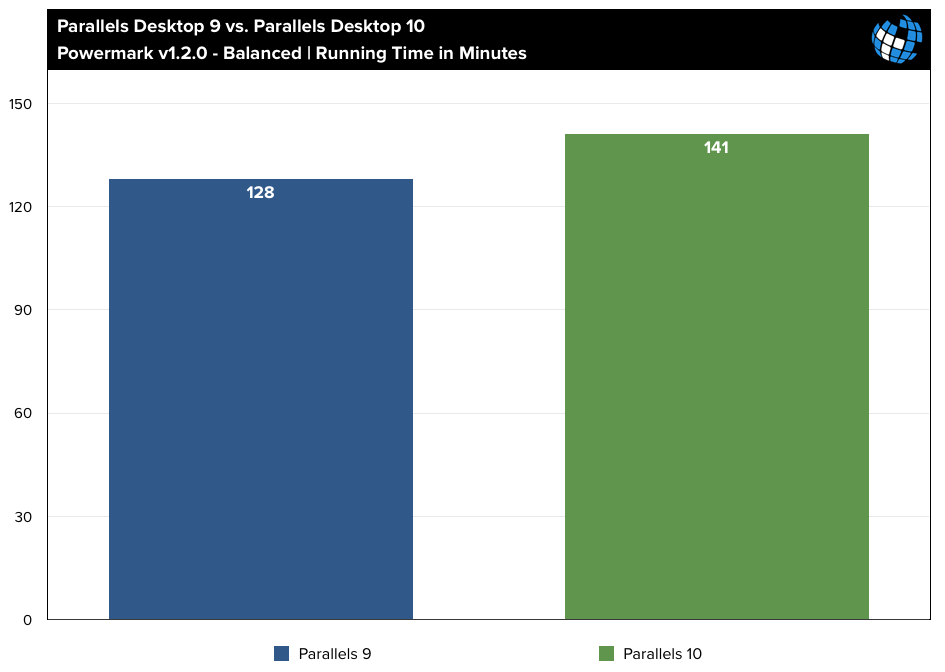 It’s not a huge difference, but Parallels 10 does offer an improvement in battery life, lasting 2 hours and 21 minutes compared to 2 hours and 8 minutes for the same test performed in Parallels 9, an increase of about 10 percent. If we move to the less-intensive “productivity” test, we see an increase in battery life and a jump to about an 18 percent improvement for Parallels Desktop 10.
It’s not a huge difference, but Parallels 10 does offer an improvement in battery life, lasting 2 hours and 21 minutes compared to 2 hours and 8 minutes for the same test performed in Parallels 9, an increase of about 10 percent. If we move to the less-intensive “productivity” test, we see an increase in battery life and a jump to about an 18 percent improvement for Parallels Desktop 10.
We’ll wrap the benchmarks up with a quick look at VM management.
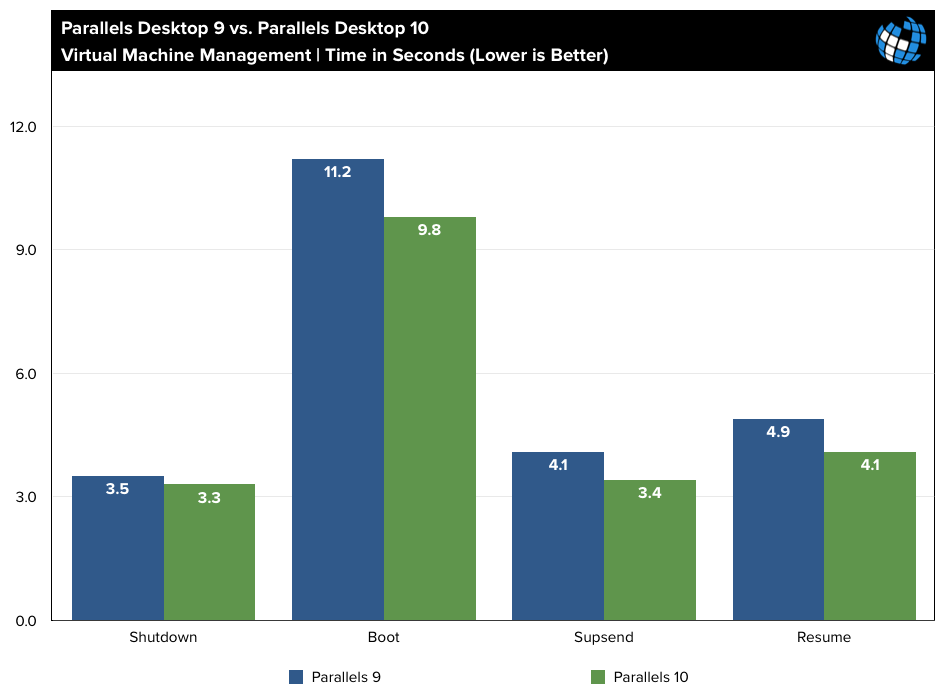 Parallels 10 offers a small, consistent improvement in virtual machine management across the board, shaving a second or two off of boot, shutdown, suspend, and resume tasks. It’s nice to see continued improvement, but these numbers only make a difference if you’re working with dozens of VMs each day. Otherwise, most users won’t notice nor mind a few extra seconds while booting or resuming their VM each morning.
Parallels 10 offers a small, consistent improvement in virtual machine management across the board, shaving a second or two off of boot, shutdown, suspend, and resume tasks. It’s nice to see continued improvement, but these numbers only make a difference if you’re working with dozens of VMs each day. Otherwise, most users won’t notice nor mind a few extra seconds while booting or resuming their VM each morning.
Continue on to the final page for a look at the Parallels upgrade controversy and our Parallels Desktop 10 conclusions.




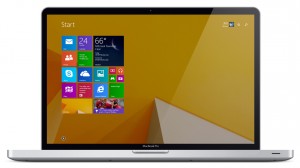




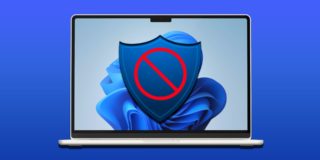

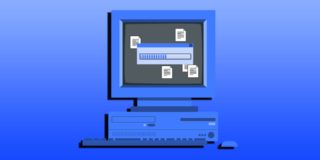








6 thoughts on “Parallels Desktop 10 Puts Emphasis on Features Over Performance”
https://www.vmware.com/products/fusion/features.html?src=WWW_Fusion_US_HPBanner_Tier1_3_Features_Promo
Parallels seriously keep ignoring paying customers with their greedy business practices. How does a customer who have bought THEIR software have to pay another $50 to upgrade to get a working copy of Parallels? Bought Parallels 9 right before OSX 10.10’s first DP. Parallels 9 kept working up until DP 3. Of course they will hide the fact that there is a Parallels 10 in the works, and then expect another $50 from a paying customer, which is the only way to get it to do work again, which is a HELL NO.
Can’t even get a refund, so I hope my Charity somehow went into their more self marketing endeavours like Ice bucket challenges, etc.
Don’t buy!
I definitely understand your concern. Note, however, that we brought this issue to the attention of Parallels and they have promised to fix Parallels 9 for the final version of Yosemite. See the discussion of this on the third page of this review. Thanks for visiting!
As a developer I KNEW I should have stuck to VB or VMWare, but I really wanted to give Parallels go. But hey we all make mistakes.
I performed some benchmarks a few years ago comparing VirtualBox to Parallels 8 and Fusion 5. Once Fusion 7 is released, I’ll pit VirtualBox against it and Parallels again and report the results here.
VMWare Fusion also looks definitely promising. In terms of performance, the Fusion Tech Preview seems to be on par with Parallels 10 (I checked Java EE application server startup time and Windows / Office document operations, but this isn’t a professional benchmark). Although the final product is not released yet, Fusion does not seem to have as complete DirectX support as Parallels has, but that’s not an issue for me. Fusion also has Open Virtualization Format export from the GUI.
Another pro for Fusion is the pricing: VMWare usually has very nice offers around black friday. And VMWare licensing allows usage on all the home Macs with one single license. What’s specially disgusting about Parallels is the price difference: in US, the upgrade is 49.99 USD, in Europe it is 59 USD + V.A.T. (The V.A.T. is acceptable, the higher basis price isn’t. Yes, this isn’t a big amount of money, but this is about principles.)
The features of Parallels 10 seem to be cool, the one click disk space reclaim function works for both Windows and Linux guests – for VMWare Fusion I had to manually fill the virtual disk with zeroes and use a command line utility to reclaim unused space.
The big jump in performance was in versions Parallels 8->9 and VMWare Fusion 5->6 (my application server startup reduced from 4.5 to 3.5 minutes any my Windows guest also feels snappier) – Parallels 10 offers nice increases in the specs but I did not see any real improvements (I think that complies to conclusion of this Article).
So I’m considering to upgrade to Parallels 10 or Fusion 7 from my current Parallels 8. I’ll definitely wait for the final Fusion 7 and the TekRevue report and then decide :)